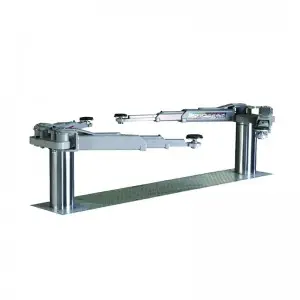****
The cylinder, a fundamental three-dimensional geometric shape, plays a crucial role in both mathematics and various engineering applications. Defined as a solid bounded by a circular base and a parallel plane, a cylinder can be right or oblique (slanting). Its properties and calculations for volume, surface area, and its unique characteristics make it an essential element of study in geometry, physics, architecture, and engineering design.
Properties of the Cylinder
In geometric terms, a cylinder consists of two parallel bases connected by a curved surface at a fixed distance from the center. The most recognizable type is the right circular cylinder, where the sides are perpendicular to the bases. The primary properties of a right circular cylinder include:
1. **Radius (r)**: The radius is the distance from the center of the base to its edge. It’s a critical component in calculating other properties of the cylinder.

Understanding the Geometric Properties, Applications, and Remarkable Features of the Cylinder in Mathematics and Engineering
2. **Height (h)**: This is the distance between the two circular bases. For a right cylinder, height is perpendicular to the bases.

Understanding the Geometric Properties, Applications, and Remarkable Features of the Cylinder in Mathematics and Engineering
3. **Volume (V)**: The volume of a cylinder can be calculated using the formula:
\[
V = \pi r^2 h
\]
This formula indicates that the volume is proportional to the square of the radius and directly proportional to the height.
4. **Surface Area (A)**: The surface area of a cylinder comprises two parts—the curved surface area and the area of the bases. The total surface area can be found with the formula:
\[
A = 2\pi rh + 2\pi r^2
\]
Here, \(2\pi rh\) represents the lateral area (side) of the cylinder, and \(2\pi r^2\) accounts for the top and bottom circular bases.
Applications of the Cylinder
Cylinders are not just theoretical shapes; they have numerous practical applications across various fields. Here are some notable examples:
1. **Engineering**: In mechanical and civil engineering, cylinders are integral to many structures, including pipes, tanks, and silos. Hollow cylindrical structures are ideal for transporting fluids due to their ability to withstand internal and external pressures.

Understanding the Geometric Properties, Applications, and Remarkable Features of the Cylinder in Mathematics and Engineering
2. **Architecture**: Architectural designs frequently utilize cylindrical shapes for aesthetic and functional purposes. Columns, domes, and other architectural features often exhibit cylindrical geometry, providing both structural stability and visual appeal.
3. **Manufacturing and Industry**: Cylindrical objects are prevalent in everyday items such as cans, bottles, and tubes. The manufacturing processes, including extrusion and molding, frequently involve cylinder shapes because they allow for efficient production and storage.
4. **Transport**: Vehicles, such as cars and airplanes, use cylindrical components extensively. For instance, the fuselage of an airplane and the body of many automobiles are cylindrical to reduce air resistance, thus enhancing aerodynamics and fuel efficiency.
The Beauty of Cylinders in Nature
Cylinders also appear frequently in nature. Many plants, such as trees and stems, exhibit cylindrical shapes that allow for optimal growth and structural integrity. For instance, bamboo and some flowering plants grow in cylindrical forms, which help them stand tall and resist environmental stresses like wind.
On a microscopic level, cylindrical structures are found in the geometry of certain bacteria, which can be observed under microscopes. The shapes contribute to their efficiency in movement through liquids, showcasing how geometry can dictate biological success.
Conclusion: A Cornerstone of Science and Art
The study of cylinders transcends mere geometry; it embodies principles fundamental to multiple disciplines. Whether one is calculating the volume of a water storage tank, designing a new prototype for manufacturing, or simply admiring the elegance of nature, cylinders serve as a bridge connecting abstract mathematical concepts to tangible physical applications.
In synthesis, understanding cylinders—along with their properties, formulas, and diverse applications—enriches our knowledge of both mathematics and the world. Such knowledge enables us to solve real-world problems, innovate designs, and appreciate the inherent beauty and functionality of this simple yet profound geometric shape. Understanding cylinders is not merely about memorizing formulas; it is about recognizing their importance in nature, technology, and our everyday lives.quick lift car lift
